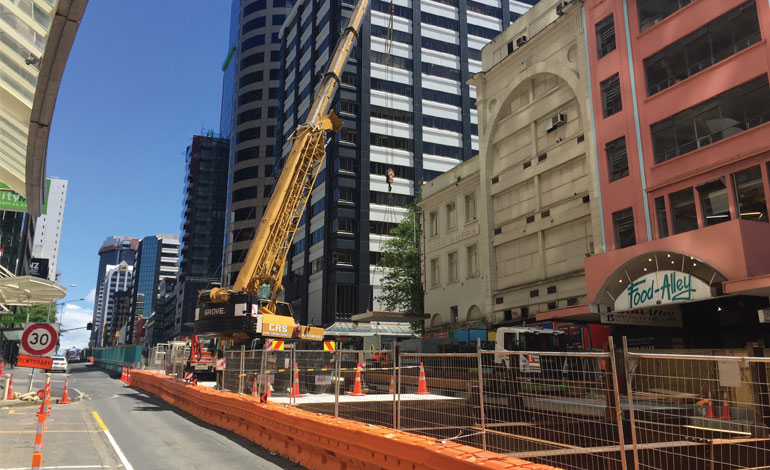The first contract for the southern end of the City Rail Link project in Auckland was awarded just before the end of last year.
THE CONTRACT FOR stormwater diversion works in Mt Eden was awarded to the March Bessac Joint Venture.
CRL chief executive Chris Meale says while the focus to date has been in the city centre with the Britomart and Albert Street works, early works at Mt Eden are now underway in anticipation of the tunnel and station’s main contract award in 2019.
The Mt Eden contract is worth $16.5 million for the construction of a new underground stormwater tunnel between Water and Nikau Streets to replace an existing adjacent pipe that will be in the way of the CRL tunnels.
The March Bessac Joint Venture contractors have extensive pipe-jacking and underground work experience both here and overseas and were chosen for a combination of their expertise, the innovation they brought to the tender and for their commercial offer.
“As a result of the contractors’ smart thinking, the works will be less disruptive and will take less time than first anticipated. That’s a win for the project and for the neighbours,” says Chris Meale.
“It’s great to get this contract awarded. We are also progressing the tenders for the main tunnels and stations and railway systems.”
In addition, early works have started in Albert Street between Wellesley and Victoria Streets for utilities and building canopy removal works.
An unusual road
At the end of November last year Connectus, the McConnell Dowell-Downer joint venture, installed the last of the 201 thick concrete slabs that form the construction and public traffic deck/road along Albert Street.
The 201 concrete slabs put together weigh about 1339 tonnes, equivalent to 335 elephants.
This deck allows the team to continue building the future CRL rail tunnels while Auckland’s Albert Street traffic keeps moving.
Aaron Ghazal, Connectus site engineer, says it was a great achievement for the team and another milestone reached for the City Rail Link project.
“It took about seven months to complete the construction and public traffic deck, which includes the pre-works, digging and removing the top 1.5 metres of the road and protecting services.”
The concrete slab road is suspended over the trench by steel struts and beams, while the Gleeson Civil excavation crew complete the dig and the tunnels for the City Rail Link are formed. The slabs are supported by 68 horizontal struts and 155 supporting beams.
This road held the 55-tonne crane with ease during construction.
The concrete slab road will stay in place until late 2018 when the tunnels are completed, ready for the new landscaped road design.
First tunnel concrete pour
In another milestone, at the beginning of December last year the first concrete was poured for Auckland’s City Rail Link tunnel box. Having started the project in late December 2015, it’s taken workers about 501,000 hours to get to this point.
So far, 30,000 cubic metres of soil and rock have been removed, filling up a double trailer-truck 1866 times.
The project has also required about eight kilometres of utility piping to be moved or suspended above the trench, and the main stormwater line two metres in diameter to be broken out and re-bored approximately 10 metres sideways to the east. This is the reason a new 516-metre stormwater pipe was installed from Wellesley to Swanson Street.
This first concrete pour was in the section beside the Auckland District Court and the Wyndham Street viewing platform at a depth of 18 metres.
The pour took almost 30 cubic metres of concrete pumped through about 56 metres of concrete hose all the way down to the base of the excavation. The job took around four hours from start to finish.
This first concrete pour is the “blinding layer” to form a flat and smooth layer for the next layer above it, which is the waterproofing membrane.
“It’s an exciting step for the project starting the construction of the tunnel box,” says Alain Giauque, Connectus project engineer
“In construction we call the first one ‘the test’ and I am glad it went very well. This is the very first stage of the tunnel box construction and the team did a great job with the preparation works before the pouring and the works during the pour.”

